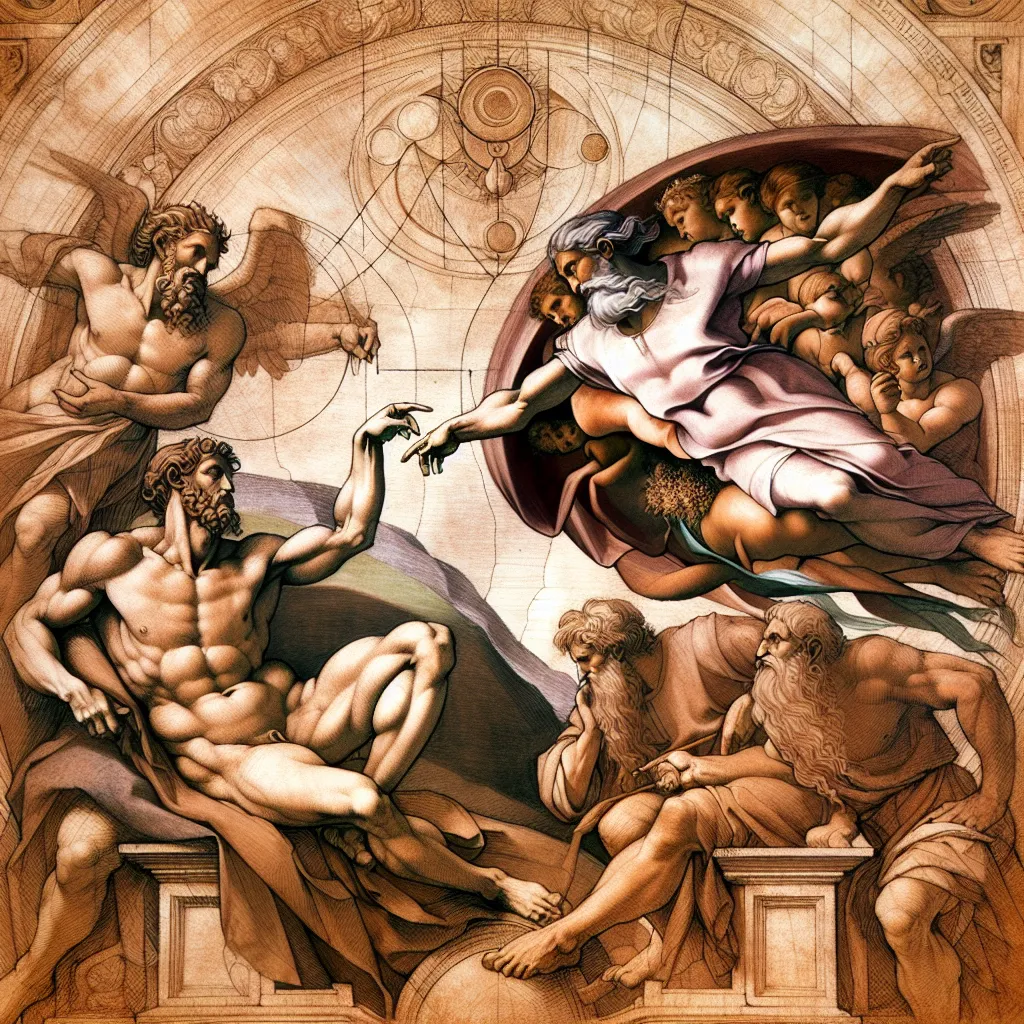
- Published on
- Authors

- Name
- You
Kabbalah in Contemporary Culture: Modern Interpretations and Practices
As ancient as it is profound, the mystical tradition of Kabbalah has found a significant place in contemporary culture. Bridging the gap between the enigmatic and the modern, Kabbalah continues to inspire many, combining spiritual wisdom with practical applications. This article delves into the contemporary interpretations and practices of Kabbalah, illustrating its enduring relevance and its integration with modern scientific thought.
Origins of Kabbalah
Kabbalah, derived from the Hebrew word meaning "receive," is a mystical branch of Judaism concerned with understanding the nature of God, the universe, and the human soul. Its roots trace back to the early medieval period, with foundational texts such as the "Sefer Yetzirah" and the "Zohar" offering complex cosmological and metaphysical insights.
Modern Interpretations
As interest in spirituality surged in the 20th and 21st centuries, Kabbalah experienced a renaissance. Contemporary interpretations often blend traditional Jewish teachings with universal spiritual themes, making them accessible to a broader audience.
Key Modern Interpretations:
- Kabbalah Centre: Founded by Rabbi Philip Berg, the Kabbalah Centre has popularized Kabbalistic teachings, emphasizing personal transformation and global unity.
- Academic Perspectives: Scholars like Gershom Scholem and Moshe Idel have provided rigorous, historical analyses that demystify Kabbalah while highlighting its psychological and philosophical depth.
- Syncretic Approaches: Influences from New Age spirituality have led to syncretic forms of Kabbalah, incorporating meditation and healing practices.
Scientific Correlations
Interestingly, certain Kabbalistic concepts parallel modern scientific theories, creating a fascinating dialogue between the mystical and the empirical.
| Kabbalistic Concept | Scientific Correlation |
|---|---|
| Ein Sof (Infinite Light) | Quantum Physics’ notion of the infinite |
| Sefirot (Divine Emanations) | Psychological Archetypes (Jungian) |
| Tree of Life Structure | String Theory and Multiverse Models |
These correlations suggest that Kabbalah’s ancient wisdom might offer a metaphysical framework complementing contemporary scientific understandings.
Contemporary Practices
Modern practitioners of Kabbalah engage in various practices aimed at spiritual growth, self-discovery, and deeper connection with the divine. These practices often incorporate traditional rituals, meditative techniques, and symbolic interpretations.
Popular Practices in the Modern Context:
- Meditation and Visualization: Techniques centering on the Sefirot or the Hebrew alphabet to facilitate spiritual insight.
- Sacred Text Study: Engaging with Kabbalistic texts such as the "Sefer Yetzirah" or "Zohar" for deeper mystical comprehension.
- Symbolic Actions: Using symbols like the Tree of Life in rituals to align oneself with divine energies.
Influence in Popular Culture
Kabbalah’s presence in contemporary culture extends beyond spiritual communities, finding its way into literature, art, music, and even fashion. Celebrities often publicize their engagement with Kabbalistic practices, further popularizing its themes and symbolisms.
Conclusion
Kabbalah’s rich, esoteric heritage continues to captivate and inspire, demonstrating a remarkable adaptability to modern contexts. By harmonizing the ancient with the contemporary, the mystical with the scientific, Kabbalah offers profound insights into the nature of existence, encouraging a union of spiritual wisdom and empirical inquiry.
Further Reading and Resources
- Books: "Kabbalah: A Very Short Introduction" by Joseph Dan, "Kabbalah: New Perspectives" by Moshe Idel
- Documentaries: "Kabbalah: The Hidden Wisdom"
- Online Courses: The Kabbalah Centre, Akadem Foundations of Jewish Mysticism
May the light of Kabbalistic wisdom illuminate your path to knowledge and understanding.
